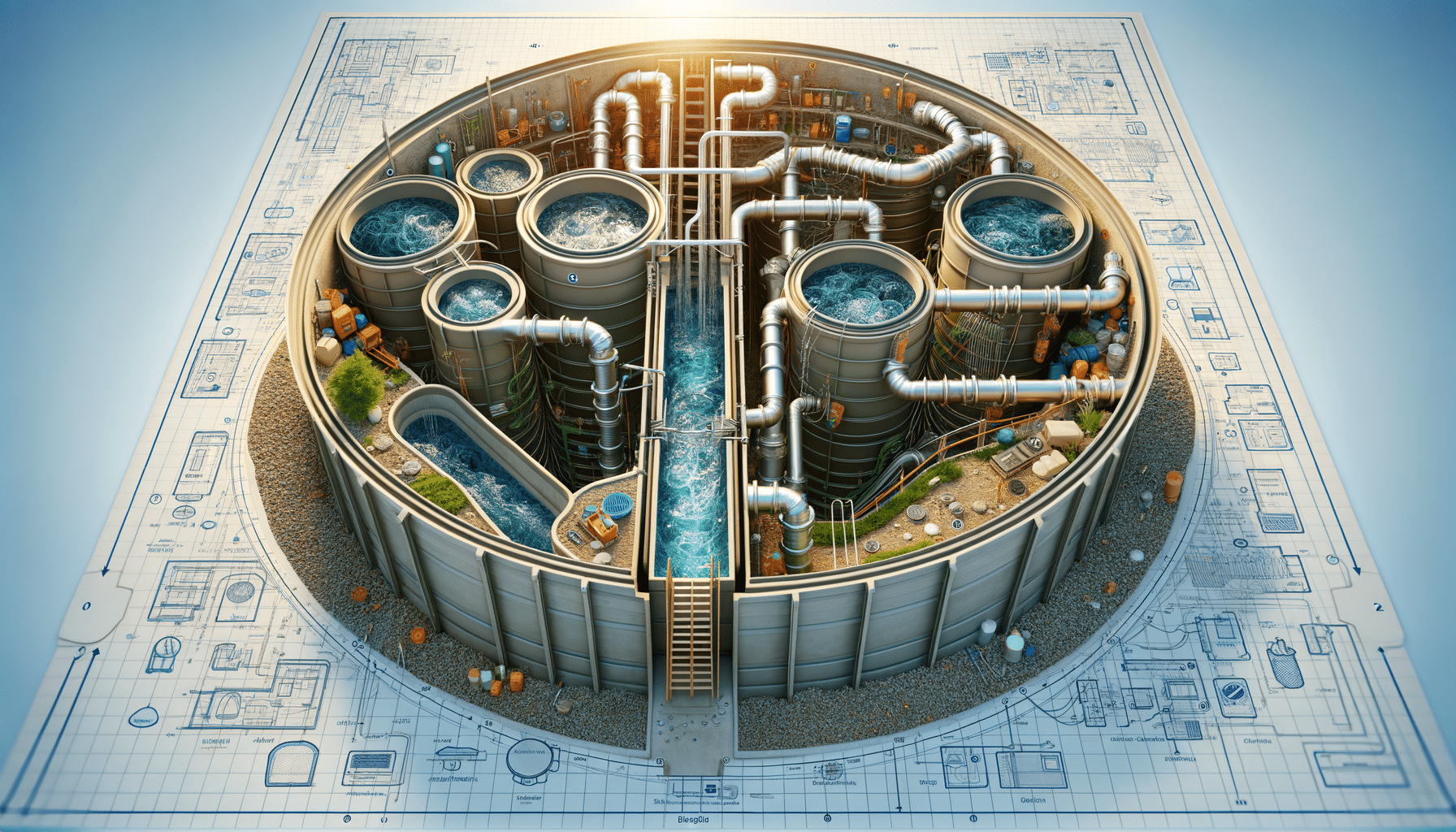
Explore how Septic tanks manage household waste offering low-maintenance, eco-friendly wastewater solutions
Understanding Septic Tanks: An Overview
Septic tanks are a crucial component of wastewater management, particularly in areas lacking access to centralized sewage systems. These underground structures are designed to treat and dispose of household wastewater through natural processes. Constructed from materials such as concrete, fiberglass, or polyethylene, septic tanks are renowned for their durability and long lifespan. By separating solids from liquids, septic tanks facilitate the decomposition of waste, ensuring that only treated water is released into the environment.
The primary function of a septic tank is to act as a settling chamber where solids settle at the bottom, forming sludge, while oils and grease float to the top as scum. The remaining liquid, known as effluent, is then discharged into a drain field or leach field where it undergoes further natural filtration. This process not only protects the surrounding environment but also minimizes the risk of contamination to groundwater sources.
Septic tanks are particularly beneficial in rural and off-grid areas where access to municipal sewage systems is limited. They provide a self-contained solution that requires minimal maintenance, making them an attractive option for homeowners seeking sustainable waste management solutions.
The Mechanics of Septic Tank Waste Disposal
Septic tank waste disposal is a process that involves the breakdown and treatment of household waste within the tank. The system relies on both physical and biological processes to treat wastewater effectively. As wastewater enters the septic tank, it is separated into three layers: sludge, effluent, and scum. The sludge, composed of heavier solids, settles at the bottom, while lighter materials form a scum layer on top. The middle layer, effluent, is the liquid that eventually flows out of the tank into the drain field.
This process is facilitated by anaerobic bacteria, which thrive in the oxygen-free environment of the septic tank. These bacteria play a vital role in breaking down organic matter, reducing the volume of sludge, and minimizing odors. The effluent that exits the tank is significantly cleaner, though not potable, and is further purified as it percolates through the soil in the drain field.
Proper maintenance of a septic tank is essential to ensure its efficient operation. Regular pumping is necessary to remove accumulated sludge and prevent overflow, which can lead to system failure and environmental contamination. Homeowners should also be mindful of what they flush or pour down the drain, as certain substances can disrupt the biological balance within the tank.
Benefits of Using Septic Tanks
Septic tanks offer numerous advantages, particularly for homeowners in remote locations. One of the primary benefits is their independence from municipal sewage systems, which can be costly to connect to and maintain. Septic tanks provide a cost-effective solution that requires minimal infrastructure, making them ideal for rural and off-grid living.
Another significant advantage is their environmental sustainability. Septic tanks naturally treat and dispose of wastewater, reducing the risk of pollution to local water sources. By allowing wastewater to be treated on-site, septic tanks minimize the carbon footprint associated with transporting waste to centralized treatment facilities.
Additionally, septic tanks are known for their longevity and low maintenance requirements. With proper care, a well-designed septic system can last for decades, providing reliable waste management with minimal intervention. This durability, coupled with their eco-friendly operation, makes septic tanks a popular choice for environmentally conscious homeowners.
Challenges and Considerations in Septic Tank Management
While septic tanks offer numerous benefits, they also present certain challenges that homeowners must consider. One of the primary concerns is the potential for system failure if not properly maintained. Regular inspections and pumping are essential to prevent the buildup of sludge and scum, which can lead to blockages and overflow.
Homeowners must also be cautious about what they introduce into their septic systems. Non-biodegradable items, harsh chemicals, and excessive water usage can disrupt the delicate balance within the tank, leading to inefficiencies and potential damage. Educating household members about proper waste disposal practices is crucial to maintaining a healthy septic system.
Environmental factors, such as soil type and water table levels, can also impact the effectiveness of a septic system. In areas with high water tables or poor soil drainage, alternative solutions or additional engineering may be required to ensure proper wastewater treatment and disposal.
Maintaining a Healthy Septic System
To ensure the longevity and efficiency of a septic system, regular maintenance and responsible usage are key. Homeowners should schedule routine inspections and pumping every three to five years, depending on the size of the tank and household usage. These inspections help identify potential issues before they become significant problems, saving time and money in the long run.
Practicing water conservation can also extend the lifespan of a septic system. Reducing water usage minimizes the volume of wastewater entering the tank, allowing more time for solids to settle and reducing the risk of overflow. Simple measures, such as fixing leaks and installing water-efficient fixtures, can make a significant difference.
Finally, homeowners should avoid using harsh chemicals and dispose of waste responsibly. Household chemicals, such as bleach and drain cleaners, can kill beneficial bacteria within the tank, disrupting the treatment process. Instead, opt for septic-safe products and consider natural alternatives when possible.
By following these guidelines, homeowners can enjoy the benefits of a septic system while minimizing the risk of costly repairs and environmental impact.


